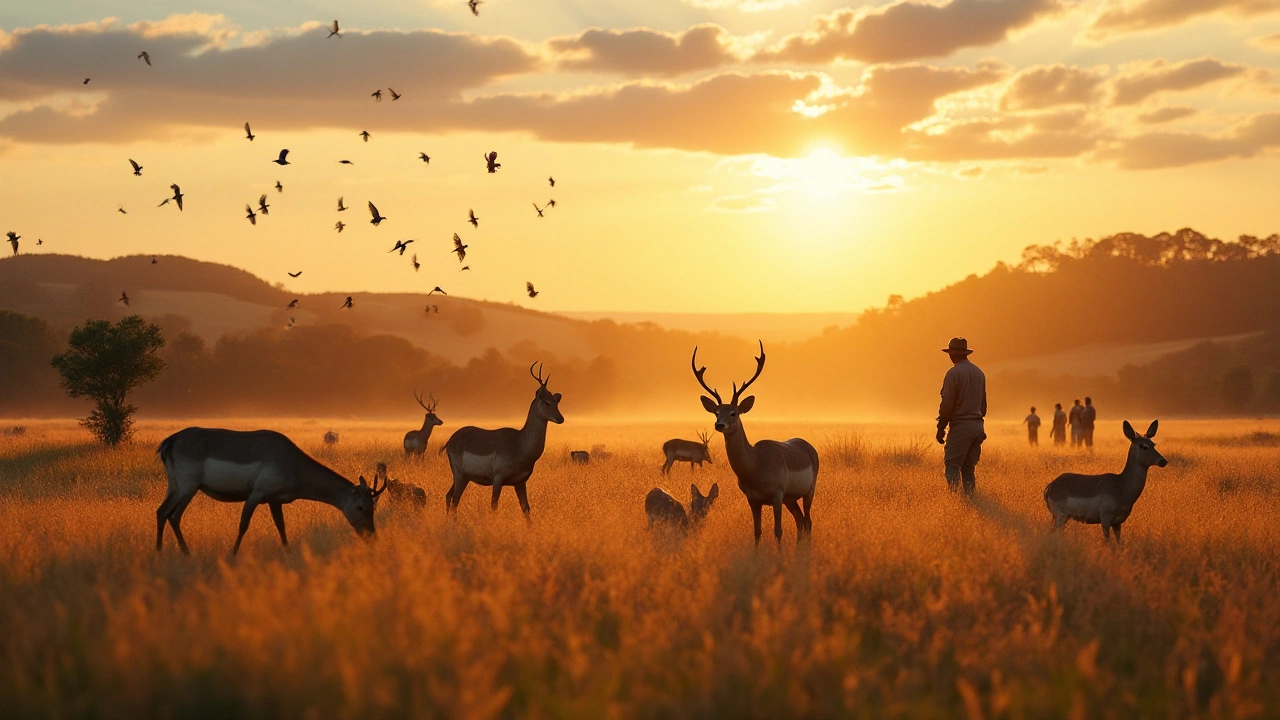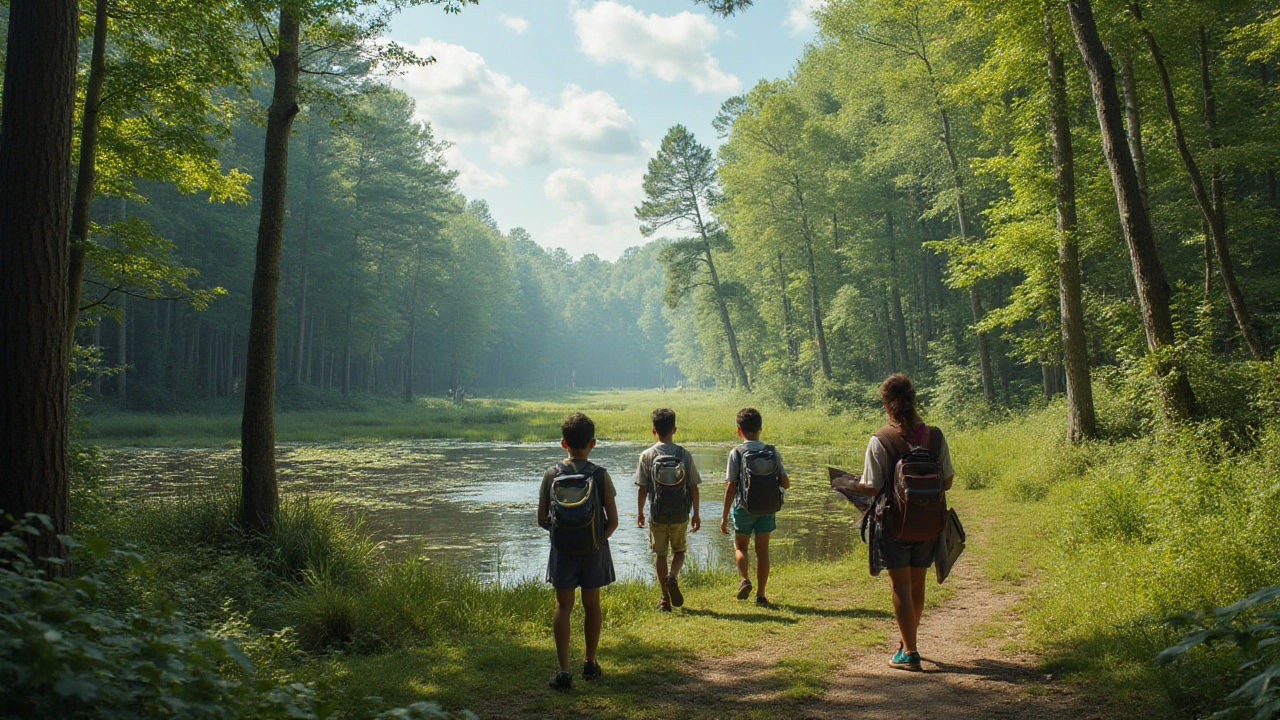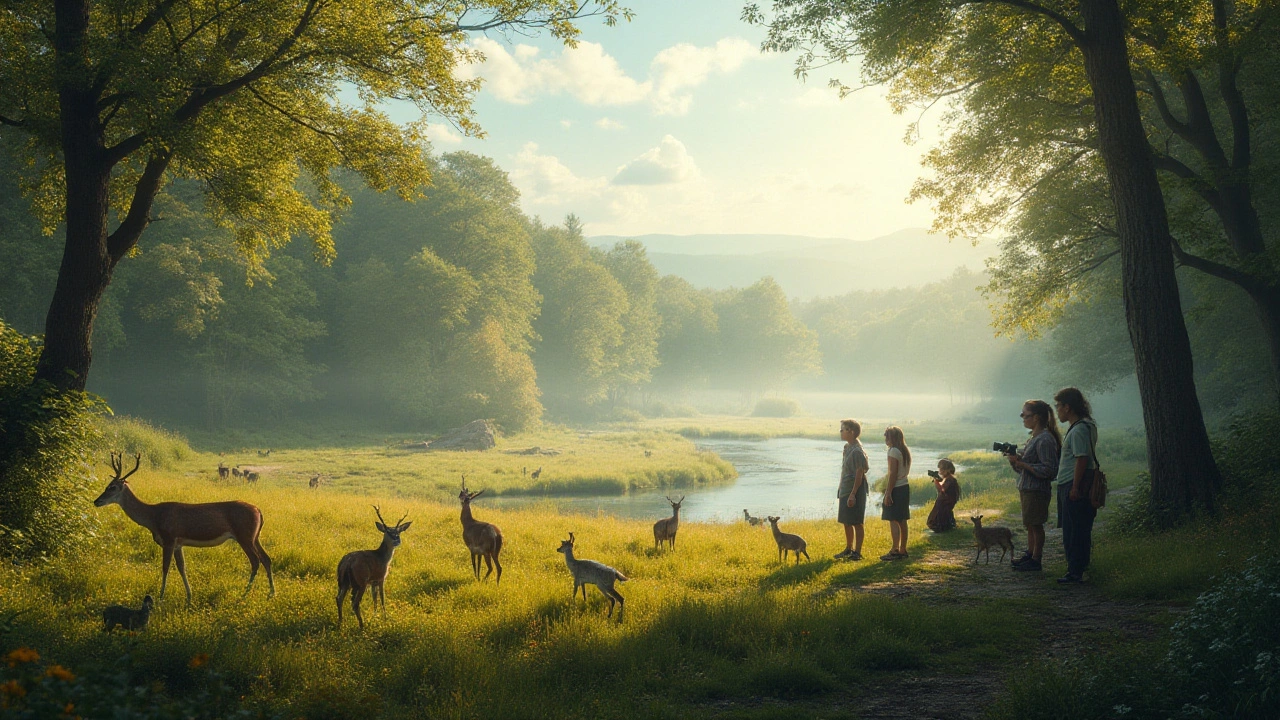In the vast landscape of the United States, wildlife sanctuaries play a crucial role in protecting a rich tapestry of flora and fauna. These special places are where our planet's natural treasures are preserved, offering refuge to countless species.
But which state holds the title for having the most of these sanctuaries? Answering this question leads us to discover not only the state itself but also the reasons why it's a haven for biodiversity. Join us as we explore the hidden corners of the nation where nature thrives.
Beyond that, find out what makes this state standout in its commitment to conservation, learn about some unique species you might encounter, and get practical tips for visiting and supporting these wildlife havens. Your journey into the heart of America's wildlife begins here.
- Understanding Wildlife Sanctuaries
- Leading State in Wildlife Sanctuary Numbers
- Reasons Behind the Leading State’s Success
- Fascinating Wildlife You Can Encounter
- Tips for Visiting and Supporting Sanctuaries
Understanding Wildlife Sanctuaries
Wildlife sanctuaries are fascinating places dedicated to the preservation and protection of animals and their natural habitats. These areas serve as vital refuges, offering safe havens for countless species of flora and fauna that might otherwise face threats from habitat destruction, poaching, and environmental changes. They are more than just protected areas; they are the heart of conservation efforts, symbolizing humanity’s commitment to safeguarding the planet’s rich biodiversity for future generations. Sanctuaries allow ecosystems to thrive, providing conditions necessary for genetic diversity, which is crucial for species adaptability and survival.
Designated sanctuaries are often established by governments in collaboration with wildlife organizations to ensure stringent protection laws are in place. Many sanctuaries span vast landscapes, showcasing a diverse array of ecosystems, from dense forests and wetlands to arid deserts and mountain ranges. Each sanctuary has its own unique challenges and objectives, tailored to support specific species and their habitats. One could spend days exploring these natural realms, each step introducing a new dimension of coexistence between man and nature. It’s common for sanctuaries to include educational components, highlighting the importance of conservation and inspiring visitors to partake in the fight for wildlife preservation.
According to the U.S. Fish and Wildlife Service, there are over 560 national wildlife refuges in the United States alone, a testament to the country’s dedication to wildlife protection. These refuges cover more than 150 million acres designed to protect migratory species, endangered species, and native habitats. Some of these sanctuaries house rare species that are nearly extinct, playing a crucial role in breeding programs aimed at increasing population numbers. Ruth S. McDaniel, a noted conservation biologist, once remarked,
“Wildlife sanctuaries are not just lands; they are living libraries of life’s secrets, places where we can still learn from nature.”
The importance of wildlife sanctuaries extends beyond the preservation of species. They also contribute significantly to scientific research by providing natural laboratories where biologists and ecologists can study ecological processes and monitor the impacts of climate change. This research is invaluable, as it informs conservation strategies and helps to develop policies to maintain and restore natural habitats. For the local communities, sanctuaries can be an impetus for eco-tourism, generating revenue while promoting a conservation mindset. When people visit these areas, they often contribute to the local economy, supporting both conservation efforts and community development.
One of the challenges that sanctuaries face is balancing public access with conservation needs. While it is vital to allow people to connect with nature and understand the importance of biodiversity, it is equally important to ensure that human presence does not disturb the wildlife or their habitats. As such, many sanctuaries have developed regulations regarding the number of visitors, access points, and activities allowed within their bounds. This delicate balance helps to ensure that sanctuaries remain pristine environments, where nature continues to flourish unspoiled by human interference.
Leading State in Wildlife Sanctuary Numbers
When it comes to wildlife sanctuaries in the United States, California emerges as the unchallenged leader. The Golden State not only boasts a staggering number of wildlife sanctuaries but is also home to a diverse range of ecosystems that are unparalleled in their beauty and variety. Nestled within its expansive borders are over forty sanctuaries, each offering unique environments for the multitude of species they host. These protected lands reflect the state's commitment to conservation and safeguarding its rich natural heritage.
What makes California such a haven for these protected areas? For starters, biodiversity is a crucial factor. The state's vast geographical diversity, from coastal zones to alpine mountains, creates countless habitats supporting an extraordinary array of plant and animal life. The celebration of nature here goes hand in hand with the state's progressive environmental policies that encourage the establishment and maintenance of sanctuaries.
Additionally, organizations and state agencies have played a pivotal role in expanding the number and scope of these sanctuaries. The California Department of Fish and Wildlife has been instrumental in identifying and cataloging areas of critical environmental significance. These efforts ensure that not only are wildlife paths and migration corridors protected, but they also promote public awareness and education about the importance of conservation.
"California's extensive dedication to its wildlife can be seen in its remarkable number of sanctuaries, which serve as critical refuges for endangered species and biodiversity hotspots," said Jane Goodall, renowned primatologist and conservationist.
The state's efforts don't stop at preservation – active involvement from local communities and public-private partnerships greatly enhances these sanctuaries. Non-profit organizations, charitable groups, and volunteers bring energy and resources necessary for habitat restoration and community education. Such teamwork demonstrates a shared vision for a future where both humans and wildlife can thrive together, which resonates throughout California's culture.
Even with these impressive numbers, the storyteller's role isn't just to focus on quantity but to delve into the quality experiences they offer. Exploring a California sanctuary, visitors witness the vivid tapestry of life, from vast sequoia groves, serene wetlands, to flourishing estuaries. Therefore, it's no wonder that this state stands as a leading example in sanctuary conservation, teaching the rest of the country – and indeed the world – what harmonious coexistence with nature looks like.

Reasons Behind the Leading State’s Success
The state that reigns supreme in terms of the number of wildlife sanctuaries showcases an incredible blend of geography, policy, and community dedication. This state, with its diverse ecosystems ranging from coastal havens to mountain retreats, provides the ideal backdrop for a wide array of biodiversity to flourish. The natural variety not only supports a multitude of species but also invites numerous conservation efforts that capitalize on these perfect conditions.
Strategic environmental policies have played a vital role in bolstering the state's sanctuary count. Local and state governments have long recognized the importance of preserving natural habitats, implementing innovative laws to protect these areas. These regulations are often designed in collaboration with environmental scientists and wildlife experts who understand the intricate balance required to maintain thriving ecosystems. Legislative measures have ensured these lands are protected, receiving funding and resources essential for their maintenance.
Beyond policy, the presence of numerous environmental organizations within the state elevates its conservation status. These groups, often a mix of grassroots movements and large non-profits, work tirelessly to establish and manage sanctuaries. Their efforts extend from land acquisition to habitat restoration, creating seamless havens where species can recover and thrive. Volunteer involvement is significant here; compassionate citizens exhibit ownership and pride in their natural surroundings.
Education is another cornerstone of the state’s success. Programs aimed at increasing public awareness about the need for wildlife protection have been impactful. Schools incorporate conservation education into their curricula, ensuring future generations are equipped with knowledge and passion to sustain ongoing efforts. Community centers, museums, and zoos complement this by offering workshops and events that highlight the importance of conservation.
The Wildlife Conservation Society once stated, "Protecting the lands and waters on which all life depends requires us all to get involved." This philosophy is deeply ingrained in the state's approach, showcasing a collective commitment that is essential for effective conservation.
The state has also benefited economically from its sanctuaries. Ecotourism has become a significant industry, drawing visitors keen to experience and engage with nature. This financial incentive has prompted local businesses and governments to support sanctuary development. Visitor centers, lodges, and guided tours provide job opportunities, sustaining local communities while promoting conservation.
Finally, technology and research contribute significantly to the state’s leading position. Cutting-edge techniques in habitat mapping and species monitoring allow for effective management. Academic institutions often partner with sanctuaries, utilizing them as living laboratories to study ecological patterns and test conservation strategies. These partnerships not only enhance scientific understanding but directly feed back into better management practices.
Fascinating Wildlife You Can Encounter
The state known for harboring the most wildlife sanctuaries is a paradise for nature enthusiasts and a testament to biodiversity's splendor. Within these protected landscapes, visitors can witness a stunning array of species, from the delicate flutter of butterflies to the stately procession of larger mammals. These sanctuaries offer a precious glimpse into an unspoiled world, providing a rich tapestry of habitats where everything from vibrant songbirds to elusive predators find refuge. Imagine setting your eyes on majestic creatures like the American bison, roaming freely over vast grasslands or catching sight of playful river otters frolicking in pristine waters. It's not just a feast for the eyes; it’s an educational journey into understanding the delicate balance of ecosystems.
Delving deeper into these sanctuaries, birdwatchers might catch sight of the rare and regal whooping crane, whose migratory paths cross these protected lands. Meanwhile, the dense forests are home to numerous amphibian species, their vibrant patterns a silent testament to the region's dynamic habitats. Every visit brings a new surprise; perhaps a deer gently grazing in the early morning mist or the rhythmic drumming of woodpeckers echoing through towering trees. These experiences underscore the state's commitment to conservation and biodiversity, sketching out natural drama as rich and engaging as the stories we read in novels.
Most compellingly, these myriad species aren’t just remnants of untouched pasts; they are the heart and soul of active efforts to keep ecosystems thriving. As noted by a well-respected conservationist, "Preserving wildlife sanctuaries is a crucial step towards ensuring a healthier planet for future generations.”
A sanctuary's success is ultimately measured by the uninterrupted chorus of life that fills its boundaries," reflects Dr. Eleanor Carver, a noted ecologist.The twists and turns of their survival stories are loaded with lessons on resilience, adaptation, and the inherent interconnections that bind us all to the earth.
For those keen to observe these fascinating creatures, preparation is key. Pack a robust pair of binoculars and perhaps a well-thumbed field guide. Early mornings and late afternoons typically offer the best chance to view active wildlife. Many sanctuaries offer educational programs, often led by passionate volunteers enamored with the wilderness, eager to share insights into animal behavior, conservation efforts, and species identification. These moments of shared curiosity can transform a regular visit into a profound learning experience, one that stays with you long after you've left the trails behind.

Tips for Visiting and Supporting Sanctuaries
Visiting a wildlife sanctuary is an enriching experience that connects you with nature in profound ways. Before you set out, it's essential to prepare so that your visit is memorable, educational, and respectful of the wildlife. Always start by researching the sanctuary you plan to visit. Understand its mission, the species it protects, and any guidelines they have. This preparation ensures that your actions align with the sanctuary's conservation goals and helps you gain the most from your visit.
When exploring the sanctuary, stay on designated paths. These trails are designed to minimize human impact, allowing nature to flourish untouched. Remember, wildlife sanctuaries are first and foremost safe havens for animals. Bring along binoculars and a camera with a good zoom lens to observe the animals from a safe distance. If you're lucky, you might catch a glimpse of an elusive species that calls the sanctuary home, transforming a simple hike into an unforgettable adventure. As the renowned conservationist Jane Goodall once said,
"The least I can do is speak out for those who cannot speak for themselves."This quote highlights the importance of respecting and supporting sanctuaries in their mission.
To support these crucial environments, consider making a donation. Many sanctuaries operate on tight budgets, relying on the kindness of visitors like you. Your contribution helps fund conservation programs, maintain habitats, and support research initiatives. Additionally, volunteering your time is a fantastic way to get involved. Whether it's helping with habitat restoration, administrative work, or guiding tours, your efforts can make a significant difference. Check with the sanctuary you're interested in to see how you can assist them.
Another way to support sanctuaries is through responsible tourism. Choose eco-friendly accommodations and local businesses that share a commitment to sustainability and conservation. By supporting the local economy, you encourage more environmentally-friendly development practices. Do not forget to spread the word. Share your experiences on social media and talk to others about the importance of conservation. Your stories can inspire others to visit and support these vital refuges, sparking a ripple effect of awareness and action. Remember, your voice and choices contribute to the wellbeing of these precious wildlife sanctuaries.
